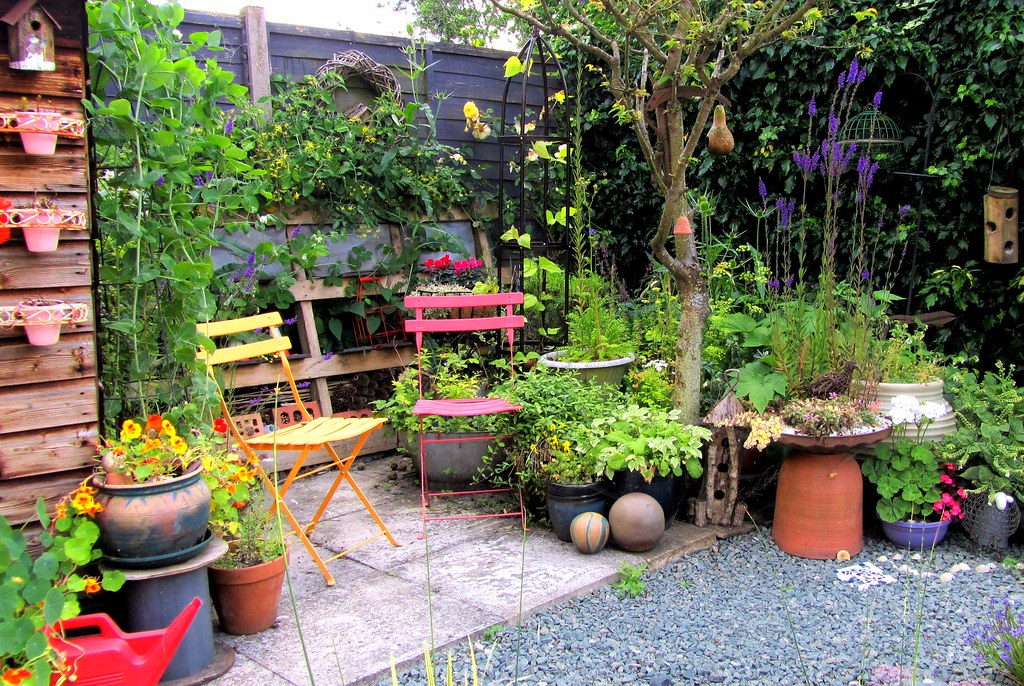Have you ever sprinkled a pinch of oregano over your pizza and thought, ‘Wow, this is the zest my life needed!’? Well, imagine if that little sprinkle was from your very own garden. A couple of years ago, I found myself with a handful of leftover oregano seeds and an uninspiring little border in my yard that was crying out for attention. Fast forward to today, and that once bland space is now a lush, fragrant haven of oregano. Let me take you on a journey from those first seeds to the ridiculousness of green that now thrives.
Every Italian food aficionado understands the transformative power of a well-grown sprig of oregano. This robust herb doesn’t just elevate your marinara; it infuses life into any savory dish that craves a kick. But the magic of oregano doesn’t stop at your taste buds. This hardy little plant is a trooper, growing with gusto in a pot on your windowsill or as a vibrant ground cover in your garden.
Beyond its culinary prowess, oregano is a treasure trove of medicinal benefits. It’s not just a seasoning; it’s a remedy. A cup of oregano tea can soothe your anxiety and calm an upset stomach. It’s like having a little herbal doctor in your backyard. And the best part? You can grow this ‘Joy of the Mountain,’ as the Greeks call it, and reap its tasty and healthful rewards all year round.
How do you start this journey? It’s simpler than you might think. Oregano is a forgiving friend to gardeners. It’s a perennial that, when left to its own devices, will happily self-propagate, sending runners across your garden like a green tide. Many gardeners, wary of its enthusiasticH spread, prefer to keep it contained in pots. This way, it adds charm without staging a garden takeover.
When should you grow oregano, and where? This Mediterranean marvel loves the sun. It thrives on it, developing a stronger flavor the more it basks in its rays. You can grow oregano in almost any climate zone, even indoors, making it a perfect project for those with limited space or those who prefer the cozy confines of an apartment.
Understanding seed germination is crucial. Oregano seeds need light to wake up from their slumber, so a light dusting of soil is all they require. Keep them warm, above 45 degrees F, and within a fortnight, you’ll see the first signs of life. It’s like witnessing a tiny miracle in your own home.
Once you’ve got your seeds sprouting, it’s time to think about their new home. Oregano isn’t picky, but it does love the sun. If you’re in a warmer zone, a little afternoon shade won’t hurt. Light, well-drained soil is its bed of choice, and it’s not a hungry plant. A little fertilizer goes a long way, and as for pH, aim for neutral ground, between 6.5 and 7. But don’t fret too much; oregano is a hardy soul that can handle a bit of adversity.
Planting your oregano is a breeze.
You can sow seeds directly after the frost has said its goodbyes, or start them indoors while the winter still lingers. If you’re using cuttings, wait until the earth has warmed to a cozy 70 degrees F. Space them out, give them room to breathe, and before you know it, you’ll have a burgeoning oregano bush.
As your seedlings stretch their legs and reach about four inches in height, give them a little haircut. Pinching off the tops encourages them to grow full and lush. Regular trims throughout the summer will keep them from getting leggy. And when those delicate flowers appear, pinch them back unless you want a Greek salad garnish.
Watering and mulching are next on the agenda.
Oregano is a bit of a camel; it doesn’t need much water. Wait until the soil feels like a dry, forgotten book, then give it a good soak. It’s better to water deeply and infrequently. As for fertilizer, a little compost in the spring will do, especially if you’re growing in a container.
Weeds are the bane of any garden, and oregano is no exception. Keep those garden invaders at bay with a hoe and some elbow grease. A layer of organic mulch will help keep the soil moist and weed-free. And when it comes to companions, oregano is the life of the party. It gets along famously with beans, basil, broccoli, and especially tomatoes and peppers. It’s like the herb that brings everyone together.
Pests and diseases? Oregano laughs in the face of adversity. Sure, it doesn’t like wet feet, so avoid overwatering to prevent root rot. And if aphids or spider mites crash the party, introduce them to their nemesis, the ladybug. It’s a natural way to keep your oregano happy and healthy.
Harvesting and storing your oregano is the final step in this green journey.
Snip the leaves as you need them, especially when the plant is in full flower mode. That’s when the flavor is at its peak. And remember, oregano is one of those rare herbs that tastes even better dried. So, hang onto some leaves for the off-season. Freeze them or dry them, but whatever you do, keep them whole until you’re ready to sprinkle that magic onto your next meal.
If you’re feeling adventurous, you can even save your own oregano seeds. Let the best of your plants go to seed, then collect and dry them. Store them in a cool, dry place, and you’ll have a little piece of your garden ready to grow next season.
You might be wondering which variety of oregano to choose. Mediterranean Oregano is the classic, the star of Italian cuisine. But there’s also Mexican Oregano, which, despite its name, isn’t a true oregano. It’s a bit of a culinary imposter but still packs a flavorful punch. And then there’s Common Oregano, not as zesty but a beauty in the garden. Golden Oregano is a particularly popular ornamental variety.
Growing oregano is a delightful experience, one that rewards you with flavor, beauty, and a sense of accomplishment. From those tiny seeds to a lush garden, it’s a journey worth taking. So, grab some seeds, find a sunny spot, and let’s get growing!
Now that we’ve covered the basics of starting your oregano journey, let’s delve into some advanced tips to help you cultivate your green thumb and manage your burgeoning oregano lushness.
Oregano, as we’ve seen, is not just a plant; it’s a story of resilience and growth. It’s a testament to the fact that sometimes, the most unexpected leftovers, like a few oregano seeds, can lead to a verdant explosion of life. This herb doesn’t just grow; it thrives with a tenacity that can inspire any gardener. As your oregano plants begin to flourish, you might notice they have a tendency to spread their wings, or rather, their roots.

Oregano is a bit of a wanderer in the garden, and if you’re not careful, it can become a beautiful invader. To keep your oregano in check, regular pruning is key. Not only does this help maintain the shape and size of your plants, but it also encourages a bushier growth, leading to more leaves for your culinary delights.
When it comes to pruning, don’t be shy. Oregano responds well to a good trim. Snip the stems just above a set of leaves, and the plant will push out two new shoots from just below the cut. This method doubles your plant’s lushness and ensures a steady supply of fresh oregano.

But what about those flowers? While they are indeed charming and edible, allowing your oregano to flower can signal the plant to start winding down its leaf production. If you’re after the leaves rather than the blooms, pinch off the flower buds as they appear. This redirects the plant’s energy back into leaf growth, ensuring that your oregano remains as leafy and productive as possible.As your oregano grows, you might find yourself with more than you know what to do with.
This is a fantastic opportunity to share the wealth. Oregano makes for a wonderful gift, whether you’re giving away fresh clippings, dried bundles, or even potted plants. Sharing your oregano is not just a gesture of kindness; it’s a way to spread the joy of gardening and the love of fresh herbs.
Oregano isn’t too fussy, but it does appreciate a well-draining home. If you’re dealing with heavy, clay-like soil, consider amending it with sand or fine gravel to improve drainage. This simple step can make a world of difference in preventing root rot and other moisture-related issues.
If you’re growing oregano in containers, the same rules apply. Ensure your pots have adequate drainage holes and consider using a potting mix designed for Mediterranean herbs. These mixes often contain a blend of soil, perlite, and sometimes sand, which provides the perfect environment for oregano to thrive.As for feeding your oregano, less is more.
This herb is not a heavy feeder, so a light application of a balanced, organic fertilizer in the spring should suffice. If you’re growing in containers, you may need to fertilize a bit more frequently, but always follow the instructions on your fertilizer to avoid overfeeding.
Pest control is another aspect of oregano gardening that requires attention. While oregano is relatively pest-resistant, it’s not immune. Aphids and spider mites can sometimes be a problem, but they can often be managed with a strong spray of water to knock them off the plants. For more persistent issues, introducing beneficial insects like ladybugs can be an effective and natural solution.
When it comes to diseases, good air circulation is your best defense. Avoid overcrowding your oregano plants, and be mindful of watering practices. Water at the base of the plants to keep the foliage dry, and water in the morning so that any excess moisture can evaporate throughout the day.
As the growing season winds down, you may want to consider taking cuttings to propagate new plants. This is a simple and rewarding process. Select healthy stems, snip them just below a leaf node, and remove the leaves from the lower half of the cutting. Then, place the cuttings in a glass of water or a moist potting mix. In a few weeks, you should see roots forming, ready for planting.
Do not forget the importance of winter care.
In colder climates, oregano may die back to the ground, but fear not—it’s a hardy perennial that will return in the spring. To give it a helping hand, you can mulch around the base of the plants with straw or leaves to provide extra insulation. If you’re growing oregano in pots, consider moving them to a sheltered location or indoors to protect them from harsh winter weather.
Your oregano plants are a reflection of your care and dedication. With these advanced tips, you can ensure that your little border of leftover seeds continues to be a source of lush ridiculousness for years to come. Embrace the joy of gardening, the beauty of growth, and the satisfaction of a well-tended herb garden. Let your oregano be a reminder that from small beginnings come great things, and that in gardening, as in life, there’s always room for a little more zest.
Related posts:
How to Grow and Care for Oregano (thespruce.com)
Oregano: Planting, Growing, and Harvesting Oregano Plants | The Old Farmer’s Almanac
How to Grow Oregano Plants | Planting & General Growing Tips – Bonnie Plants





